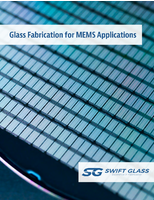Innovative Cryogenic Technology Used in the Planck and Herschel Satellites
As part of European Space Agency (ESA) scientific programs, a launch has been announced on May 14 next, of Ariane 5, awaited with bated breath by the international scientific community. On this event, the European carrier will launch two of the most complex satellites ever produced in Europe: Planck and Herschel. They will be placed in an orbit 1.5 million kilometers from Earth, after a voyage through space lasting almost four months. These new space telescopes will be able to supply astrophysicists with unprecedented data of previously unseen accuracy, about the universe, its origin and its evolution. The Air Liquide group, the world leader in cryogenics, developed the innovative technology placed at the heart of these two scientific satellites.
For the Planck mission, Air Liquide had to meet an exceptional technological challenge, developing a dilution cooler of an efficiency never achieved before. Group technologies will hence enable extremely low temperatures to be reached, close to absolute zero (-273.15°C) in a highly restrictive space environment. Planck will be observing the Universe as it was more than 13 billion years ago, thanks to light emitted about 380,000 years after the Big Bang and which is still travelling freely through space. In order to detect the weakest signals, the instruments have to be operating at a very low and stable temperature of 0.1 Kelvin ("K"), or one tenth of a degree above absolute zero. The Planck satellite, with its cooler, will be able to map the cosmic radiation from the edge of the Universe during its one and a half years of operation. This is the first time that this technology has been qualified for use in space. In orbit, Planck will become the coldest point in space, at 0.1 K instead of 2.7 K. For this exceptional project, teams at Air Liquide worked in close collaboration with experts from the Néel Institute (CNRS, National Center for Scientific Research, France) and the Space Astrophysics Institute (IAS) on behalf of the National Center for Space Studies (CNES, France).
The requirements for the astronomy satellite Herschel lay mainly in the design and build of its cryogenic tank. This tank will store superfluid helium at a temperature of 1.6 K, designed to cool the telescope and its three observation instruments. Air Liquide thus designed and built a huge 2,400-liter tank which had to be perfectly sealed. Equipped with a mirror of 3.5 meters in diameter, this satellite will become the largest space telescope ever installed in space and will provide astronauts with unique means of observing the universe and hence, explore zones where stars, the centers of galaxies and planetary systems are born.
François Darchis, member of the Air Liquide Executive Committee, in charge of Advanced Technologies, declared: "Once again, our teams have demonstrated their ability to meet major challenges in the field of cryogenics. Committed to the space adventure for almost five decades, Air Liquide is confirming its presence alongside the scientific community, by developing innovative technologies for science to push back the boundaries of knowledge."
Air Liquide is the world leader in gases for industry, health and the environment, and is present in over 75 countries with 43,000 employees. Oxygen, nitrogen, hydrogen and rare gases have been at the core of Air Liquide's activities since its creation in 1902. Using these molecules, Air Liquide continuously reinvents its business, anticipating the needs of current and future markets. The Group innovates to enable progress, to achieve dynamic growth and a consistent performance.
Air Liquide combines many products and technologies to develop valuable applications and services not only for its customers but also for society. Innovative technologies that curb polluting emissions, lower industry's energy use, recover and reuse natural resources or develop the energies of tomorrow, such as hydrogen, biofuels or photovoltaic energy... Oxygen for hospitals, homecare, fighting nosocomial infections...
A partner for the long term, Air Liquide relies on employee commitment, customer trust and shareholder support to pursue its vision of sustainable, competitive growth. The diversity of Air Liquide's teams, businesses, markets and geographic presence provides a solid and sustainable base for its development and strengthens its ability to push back its own limits, conquer new territories and build its future.
Air Liquide explores the best that air can offer to preserve life, staying true to its sustainable development approach. In 2008, the Group's revenues amounted to 13.1 billion, of which almost 80% were earned outside France. Air Liquide is listed on the Paris Euronext stock exchange (compartment A) and is a member of the CAC 40 and Dow Jones Euro Stoxx 50 indexes.




